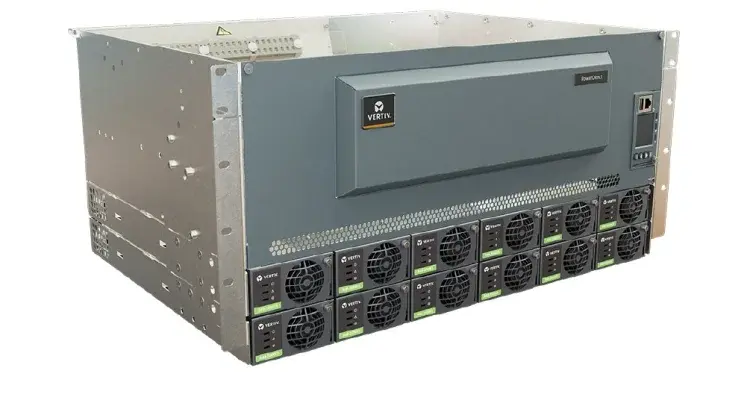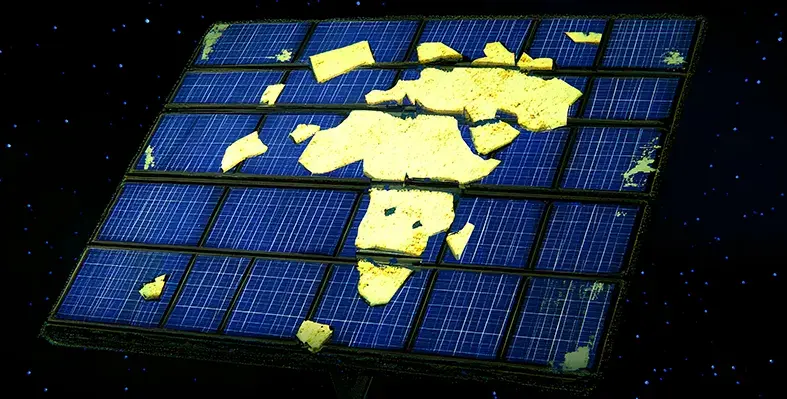Among European national broadcast trade exhibitions, SATIS is the great survivor, soldiering on under the same name (give or take a SIEL or two) year after year
Broadcasters may be content to trek to Amsterdam each September for IBC but, like its London counterpart, the Paris video production and post-production community still prefers something nearer home.
A significant change this year was a relocation from Porte de Versailles on the south west side of the city to the more compact Halle Freyssinet which SATIS occupied from Tuesday 8 though Thursday 10 November.
The new venue is a distinct improvement being nearer to the city centre venue and very close to Chevaleret station on the Paris Metro. SATIS occupied a single large rectangular hall with a mezzanine floor running part of the length. Two thirds of the show floor could be viewed from the raised level as an easy way to identify which major exhibitors were where.
The exhibition map was not much use for navigation as only nine of the 173 stands were named; all others had to be identified by the tedious process of cross-referring stand numbers in the show guide. This problem is not unique to SATIS. If the organisers of the massive NAB Convention can produce decent floorplans, why not the little shows?
Acquisition
Exhibition attendance on the day of my visit (Wednesday) was satisfactory without being manic, except on the Canon stand which seemed permanently packed with visitors watching demonstrations of the first camera in the company's new Cinema EOS product line. Only fractionally larger than a standard digital single-lens reflex camera, the EOS C300 has an 8.3 megapixel [DELETE CMOS] Super 35 millimetre CMOS sensor allowing video recording at 50 megabits per second in 4:2:2 MPEG-2 MXF file format on to dual Compact Flash memory cards. A third slot memory accommodates an SD card to storing user presets. The camera is claimed to be able to deliver low-noise images at up to ISO 20,000 sensitivity. Supporting accessories include five new lenses.
JVC exhibited its new GY-HM150 handheld camcorder, the latest addition to its ProHD series. Introduced at IBC in September, this has three quarter-inch progressive-scan CCD imagers and records 35 megabit per second high definition video with uncompressed audio direct to SDHC memory cards. File formats are QuickTime and MP4. Two card slots are provided, holding a total of 64 gigabytes equivalent to six hours of continuous recording. The cards can be hot-swapped for longer capture times.
Panasonic's SATIS stand was unusual, if not unique, in being the only show booth I have ever seen that had an integral golf course. This was configured as a subject for visitors to try out a selection of the company's 2D and 3D cameras.
Production
EVS demonstrated its new Live Ultra Motion Replay, combining its XT3 LSM and the new I-MOVIX X10 Ultra Motion camera systems. Slow motion action replay from an Ultra Motion camera (capturing more than 150 frames per second) was previously only possible by generating a video clip from a buffer located in the camera; any live action happening during this process would have been lost. Recent developments of the XT series server allow the entire output of the I-MOVIX Ultra Motion camera to be captured at frame rates of up to 250 frames per second as well as instant generation of ultra slow motion replays without losing any of the live action. A UMotion software module is required for the existing XT3 server in LSM mode to allow a continuous loop recording of the high frame rate video stream generated by the X10. The system is up to 10 times slower than real time slow motion replays which are available at any moment during a live production.
Newtek exhibited the latest version of its Tricaster HD live video production and streaming system. The Tricaster 450 Extreme allows multi-track, multi-format recording of up to four channels of video from any input or output, simultaneously. It provides14-channel production control with support for up to four live cameras. Multi-angle virtual sets with real-time reflections and animated zoom control allow simulation network-style studio simulation.
Post-production
Avid presented theatre-style tutorials explaining the new 64-bit versions of its Media Composer version 6, NewsCutter version 10 and Symphony version 6 video editing software. Features include support for third-party hardware, AVCHD and Red Epic with Avid Media Access (AMA), plus an Avid DNxHD 444 codec and compatibility with Avid Artist Color.
With file-based operation rapidly replacing discrete-media recording, demand for safe long-term archiving systems is growing. Atempo announced that its ADA (Atempo Digital Archive) is now fully compatible with LTO-5 tapes in the open-source LTO linear tape data storage platform.
Blackmagic Design exhibited the new version 8.1 of its DaVinci Resolve 8.1 colour control software. With this new update, DaVinci Resolve can now import and export Apple Final Cut Pro X timelines using the new FCP rich-XML file format. When working in Final Cut Pro X, customers can move between Final Cut Pro X and DaVinci Resolve, retaining the multi track timeline with frame-accurate cuts, dissolves and speed changes. DaVinci Resolve will also use rich XML from Final Cut Pro X to link to original camera footage. DaVinci Resolve supports full media management for Final Cut Pro X projects including additional source clip folders and alternate image source when conforming edits in Resolve.
Matrox Video Products Group introduced its new Mojito MAX, an SDI/HDMI/analog HD/SD video and professional-audio I/O card that includes an onboard Matrox MAX H.264 encoding accelerator. This is designed to provide broadcast-quality input and output for editing applications such as Adobe Creative Suite 5.5 Production Premium, Apple Final Cut Studio and Final Cut Pro X, as well as the new Avid Media Composer 6. It also enables users to deliver H.264 files for the web, mobile devices, and Blu-ray up to five times faster than software alone. Price is 799 euro.
Quantel showed the next stage in the development of its QTube system. QTube provides instant access to live production for frame-accurate editing from via the Internet. The next development phase will give users the ability to integrate files held on generic IT storage into the QTube workflow. Also on show was QTube working with cloud storage and processing.
Snell announced the availability of new graphics and character generator features in version 2.2 of its Integrated Content Engine (ICE). This includes additional branding tools for visually enhancing HD and/or SD channels, as well as customised vertical ancillary data space insertion. ICE combines a video server, graphics, switchers, channel branding, captioning, and subtitling in a three rack-unit chassis, all managed by Morpheus automation. Version 2.2 of ICE gives operators the ability to generate vertical and horizontal crawls via automated URL or RSS feed, or from manually created source information. Crawls can be created and keyed by an operator or fully automated by Morpheus. ICE now also offers multiple DVEs per mixer effect, enabling users to squeeze multiple programmes on-air while inserting graphics and audio effects.
Picture displays
Panasonic's gigantic Model 152 4096 x 2160 pixel plasma display panel was a real attention-grabber. With a 3.6 metres wide by 1.98 metres high display area (152 inch diagonal) it is about the largest screen that could possibly be transported through a standard-height doorway, pre-supposing no awkward tight turns en route. Picture quality proved stunning at normal viewing distance and remained so until seen from the absurdly close distance of arm's length from where the individual pixels become visible. Price is a bit steep, currently £380,000. Given sufficient demand, that could obviously come down as dramatically as flat-panels of smaller sizes. But will there ever be a mass market for giant displays?
Up on the mezzanine floor, Sony promoted its new BVM-E250 24.5 inch OLED picture monitor. Designed for applications such as colour grading and master control monitoring, it is claimed to deliver wide dynamic range, ultra-low motion blur, wide colour gamut and high monitor to monitor consistency.? The BVM-E250 accepts input of up to 1920 x 1080 pixels resolution and has an HDMI port.
Sound
Among exhibitors at the audio end of the hall, Paris-based reseller Areitec exhibited the latest version of NTP Technology's DAD AX24 eight-channel ultra-high-quality AD/DA audio converter. The AX24 192 PHD can be interfaced directly to Avid Pro Tools digital audio workstations. It offers A/D and D/A conversion in PCM at up to 384 kHz sampling rate, DSD at 64 frame/s or 128 frame/s and 352.8 kHz DXD. The optional microphone preamplifier incorporates analogue gain in 3 dB steps as well as digital gain with 0.25 dB precision. Dynamic range is between 118 and 121 dB and the preamp equivalent noise floor is -130 dB. The AX24 192 PHD is fully remote controllable via RS-422, USB or Ethernet.
Kudelski exhibited the Nagra LB recorder which captures two-channel audio to solid-state memory. A successor to the ARES-C and ARES-BB+ recorders, the LB can record in either PCM linear audio or in MPEG-1 layer II or MP-3 compressed audio formats. The inputs accept dynamic and +48 volt phantom-powered capacitor microphones. The line input accepts signal levels of up to +24dB. The audio levels and current operating mode of the recorder are shown on the colour display mounted on the front of the unit. The front display becomes inactive when the editor on the top panel of the machine is in use.
by Rod Melchurch






















